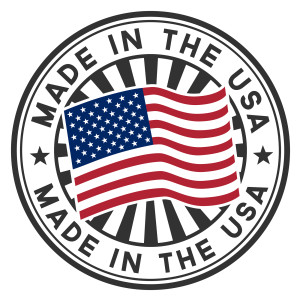Our manufacturing industry is a significant part of our identity as Americans. It helped shape the American dream of prosperity, success and upward social mobility, which resulted in the expansion of the middle class during the 20th Century. While American manufacturing remains a powerful driving force for economic growth, contributing approximately $2.6 trillion dollars or 16% to the total GDP in recent years, the U.S. has lost its lead in manufacturing to China.
Plagued by slow growth, a large drop in employment, and significantly higher imports than exports, U.S. manufacturing remains vulnerable to falling further behind in the future. I strongly believe that in order to preserve our rich legacy, we must focus our attention and resources towards promoting innovative polices that will rejuvenate American manufacturing. I am not alone in this thinking. As the Brookings Institute recently explained, following an assessment of American manufacturing history, future success in this sector will depend heavily on whether we take advantage of innovative technologies that will lead to new products and markets.
That is one of the reasons why I introduced H.R. 4159, the America Competes Act of 2014, which continues the legacy of the bipartisan-supported America Competes Act of 2010 and embraces the priorities of the Democratic “Make it in America” plan for achieving manufacturing growth. This bill seeks to not only sustain, but to further strengthen America’s competitiveness and global leadership by increasing investments in science, technology, and innovation. There are several provisions in the legislation that aim to ensure long-term investments and growth in the manufacturing sector. In that regard, I am particularly excited about the provision which establishes an Innovation Voucher Pilot Program.
The Innovation Voucher Pilot Program creates incentives that would support manufacturing partnerships between small and medium-sized manufacturing businesses and academic research institutions. This would allow businesses access to technical expertise and enable the transfer of innovative knowledge between the academic world and the private sector. Innovation voucher programs have had broad success in other countries. For example, the Netherlands was the first to implement an innovation voucher program ten years ago. A subsequent Dutch government assessment showed that 8 out of 10 vouchers awarded resulted in innovative advancements in science and technology that would not have been carried out without the vouchers. The assessment also showed that the voucher program helped create 80% of the research and development jobs in the Netherlands since 2005. Results like this demonstrate not just the feasibility, but the overwhelming effectiveness of this program in supporting innovation that can spur much needed growth in our manufacturing sector.
Here in the U.S, we have also begun to make use of innovation vouchers at the state level. For example, the Connecticut Innovation Ecosystem Program launched Entrepreneur Innovation Awards. These awards provide funding to early-stage companies to support collaborative partnerships that will expand the potential of high-performing small businesses to help stimulate faster innovation and promote success in the global marketplace. An expansion of programs like these will not only enrich local economies, but will help improve the entire U.S. economic outlook.
Science and technology are key drivers of U.S. competitiveness in the global economy. This is why bold federal investments in manufacturing, like the Innovation Voucher Pilot Program, will help to ensure our continued prosperity and capacity to adapt to the changing landscape of global science and technology. The future of American manufacturing cannot be left to chance. We must actively rejuvenate our manufacturing sector, and I firmly believe my legislation provides a sustainable strategy that will achieve long-term manufacturing growth and success.

